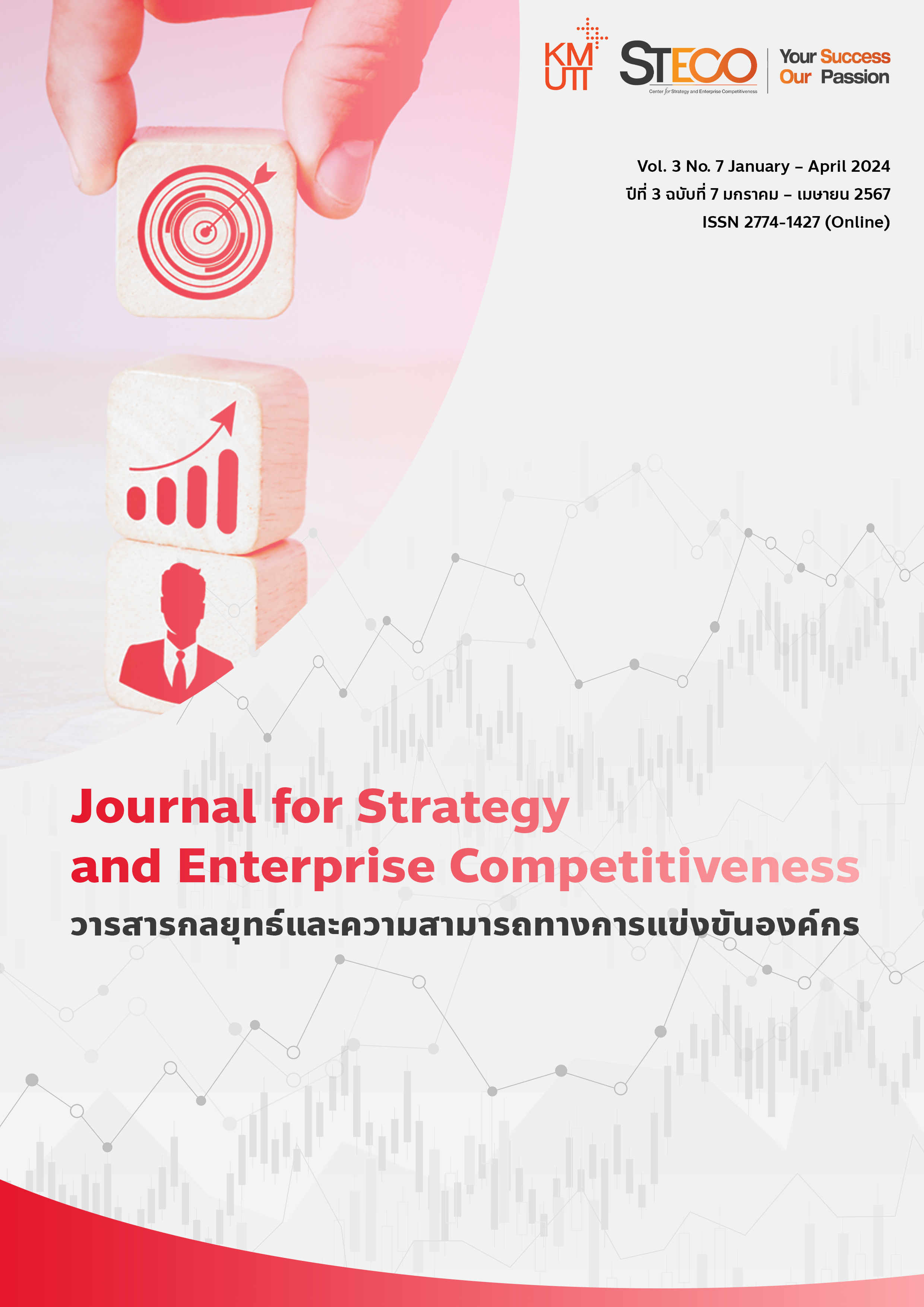Organizational Commitment: Evaluating the Influence of Work-Life Quality on Early-career Staff in a Research Institute
Keywords:
quality of work life, organizational commitment, early-career staff, Chinese research academy, employee perspectivesAbstract
This research explores the intricate relationship between the quality of work life (QWL) and organizational commitment among Early-career staff in a Chinese research academy. The well-being of employees is increasingly recognized as a critical aspect of organizational success. Researching QWL and organizational commitment can help identify areas where improvements can be made to support the physical, mental, and emotional well-being of early-career staff, leading to higher job satisfaction and overall happiness. Employing a quantitative approach, this study utilizes 330 respondents from questionnaire survey and subsequent regression analysis to collect primary data and analyze employee perspectives. The findings emphasize a predominantly positive perception of QWL among Early-career staff, coupled with a favorable view of organizational commitment. Notably, the academy's tendency to prioritize position replacement over termination in response to work challenges nurtures a strong sense of commitment among employees. The implications suggest that such a commitment-focused approach, addressing QWL dimensions, can foster loyalty and reduce turnover, promoting a more stable and dedicated Early-career workforce.
References
Aaker, D. A., Kumar, V., and Day, G. S. (2001). Marketing Research. New York: John Wiley & Sons, Inc.
Alexandra, B., Henry, L. C., Bretz, R. D. and Judge, T. A. (1994). Making the link between work-life balance practices and organizational performance. Human Resource Management Review, 19, 531-550.
Alrawahi, S., Sellgren, S. F., Altouby, S., Alwahaibi, N., and Brommels, M. (2020). The application of Herzberg's two-factor theory of motivation to job satisfaction in clinical laboratories in Omani hospitals. Heliyon, 6(9), e04829. https://doi.org/10.1016/j.heliyon.2020.e04829
B. Jensen I, Björk Brämberg E, Wåhlin C, Björklund C, Hermansson U, Lohela Karlson M, Schäfer Elinder L, Munck af Rosenschöld P, Nevala T, Carter N, Mellblom, B., and Kwak, L. (2020). Promoting evidence-based practice for improved occupational safety and health at workplaces in Sweden. Report on a practice-based research network approach. International Journal of Environmental Research and Public Health, 17(15), 5283. https://doi.org/10.3390/ijerph17155283
Bakker, A. B., and Demerouti, E. (2007). The job demands-resources model: State of the art. Journal of managerial psychology, 22(3), 309-328. https://doi.org/10.1108/02683940710733115
Bobbio, A., Canova, L., and Manganelli, A. M. (2022). Organizational work-home culture and its relations with the work–family interface and employees’ subjective well-being. Applied Research in Quality of Life, 17(5), 2933-2966. https://doi.org/10.1007/s11482-022-10048-w
Cummings, T. G., and Worley, C. G. (2014). Organization development and change. Cengage learning. AL, & Alcadipani, R. (2016). The politics of access in fieldwork: Immersion, backstage dramas, and deception. Organizational Research Methods, 19(4), 535-561.
Decramer, A., Smolders, C., and Vanderstraeten, A. (2013). Employee performance management culture and system features in higher education: relationship with employee performance management satisfaction. The International Journal of Human Resource Management, 24(2), 352-371. https://doi.org/10.1080/09585192.2012.680602
Easton, S., and Van Laar, D. (2018). User Manual for the Work-Related Quality of Life (WRQoL) Scale: A Measure of Quality of Working Life. (2nd Edition). University of Portsmouth. https://doi.org/10.17029/EASTON2018
Guest, D., Know, A., and Warhust, C. (2021). Human Relations virtual special issue: The Quality of Working Life Revisited. (2021). Human Relations, 74(1), 153-156. https://doi.org/10.1177/0018726720973156
Gaan, N., and Shin, Y. (2023). Generation Z software employees turnover intention. Current Psychology, 42(31), 27344-27359. https://doi.org/10.1007/s12144-022-03847-9
Lee, B., Lee, C., Choi, I., and Kim, J. (2022). Analyzing determinants of job satisfaction based on two-factor theory. Sustainability, 14(19), 12557. https://doi.org/10.3390/su141912557
Lopes-Pereira, A. P., Grego-Maia, L., Valverde-Marques dos Santos, S., do Carmo Cruz-Robazzi, M. L., and da Silva, L. A. (2020). Predictors associated with the quality of life at work of public university teachers. Revista de Salud Pública, 22(5), 544-551.
Ma, Y., Sung, T., and Xu, Y. (2022). The impact of perceived organizational support and psychological capital on turnover intention: Based on the survey of teachers in Guangxi Private Colleges and Universities. ICIC Express Letters, Part B: Applications, 13(10), 1045-1052. https://doi.org/10.24507/icicelb.13.10.1045
Malik, M. E., and Naeem, B. (2013). Towards understanding controversy on Herzberg theory of motivation. World Applied Sciences Journal, 24(8), 1031-1036. https://doi.org/10.5829/idosi.wasj.2013.24.08.2442
Maswani, Syah Tantri Yanuar Rahmat, and Anindita Rina. (2019). The relationship between organizational culture and job satisfaction towards organizational commitment and employee performance. Russian Journal of Agricultural and Socio-Economic Sciences, 88(4), 144-152. https://doi.org/10.18551/rjoas.2019-04.19
Menard, S. (2001). Applied Logistic Regression Analysis. (2nd Edition). California: SAGE Publications, Inc.
Morgeson, F. P., and Humphrey, S. E. (2006). The Work Design Questionnaire (WDQ): developing and validating a comprehensive measure for assessing job design and the nature of work. Journal of applied psychology, 91(6), 1321-1339. https://doi.org/10.1037/0021-9010.91.6.1321
Shuck, B., and Rose, K. (2013). Reframing employee engagement within the context of meaning and purpose: Implications for HRD. Advances in Developing Human Resources, 15(4), 341-355. https://doi.org/10.1177/1523422313503235
Srinivasaiah, R., Devappa Renuka, S., and Nanjundeswaraswamy, T. S. (2023). Quality management practices and quality of work life–a conceptual model development. International Journal of Quality & Reliability Management, 40(2), 391-418. https://doi.org/10.1108/IJQRM-06-2021-0189
Tian, X., Swatdikun, T., and Chalomklang, C. (2023). The Impact of Quality of Work Life and Organization Commitment on Turnover Intention: Empirical Evidence from Dunhuang Academy, China. Science, Technology, and Social Sciences Procedia, 2023(2), CiM03. https://wjst.wu.ac.th/index.php/stssp/article/view/25789
Yamane, T. (1973). Statistics: An introductory analysis. New York: Harper & Row.

Downloads
Published
How to Cite
Issue
Section
License
Copyright (c) 2024 Journal for Strategy and Enterprise Competitiveness

This work is licensed under a Creative Commons Attribution-NonCommercial-NoDerivatives 4.0 International License.
The opinions appearing in the content of articles of Journal for strategy and enterprise competitiveness. It is the opinion and responsibility of the article author. It is not the opinion and responsibility of the Center for strategy and enterprise competitiveness, King Mongkut's University of Technology Thonburi
Articles, information, content and images, etc., in the Journal for strategy and enterprise competitiveness. It is the exclusive copyright of the Center for strategy and enterprise competitiveness, King Mongkut's University of Technology Thonburi. If an individual or entity wants to distribute all or part of the content or for any action must obtain written permission from the Center for Strategy and enterprise Competitiveness, King Mongkut's University of Technology Thonburi.


